Managing Fox Problems in BR3: A Guide for Beckenham Residents
If you live in BR3, covering Beckenham and surrounding areas in the London Borough of Bromley, chances are you’ve encountered foxes in your garden or seen them prowling the streets at night. While foxes are a natural part of urban wildlife, for many residents, their presence has gone from occasional sightings to a frustrating daily nuisance.
From rummaging through bins and digging up gardens to fouling on driveways and creating unbearable smells, foxes are causing problems for many Beckenham residents. And as you’ll see in this article, you’re not alone. Foxes have firmly made BR3 their home.
If foxes are making your garden less enjoyable, causing mess, or creating tension with neighbours, this guide will explain why Beckenham has such a fox problem, why the council won’t help, and most importantly, what you can do to keep them out of your garden.
Why This Article Was Written
This article was written after analysing over 11 years’ worth of postcodes from customers who purchased the FOXWatch Ultrasonic Fox Deterrent from this website. The second most common postcode district among FOXWatch buyers was BR3 – Beckenham (second only to SW19, Wimbledon).
This confirms what many residents already suspect; Beckenham has a significant fox problem. If you’ve been dealing with foxes in your garden, you’re not alone.
Common issues reported by Beckenham residents include:
- Foxes digging up lawns and flower beds
- Strong-smelling fox mess on driveways and patios
- Bin bags being torn open and food scraps left scattered
- Neighbours encouraging foxes by feeding them
If you’re experiencing any of these problems, this article will help you understand why foxes are so prevalent in BR3 and how you can take action to protect your garden.
Why Does BR3 Have a Fox Problem?
Beckenham offers foxes everything they need to thrive: shelter, food, water, and easy access to urban and natural environments.
1. A Large Population with Lots of Gardens
Beckenham is known for its leafy streets, period homes, and spacious gardens, making it one of the more desirable residential areas in South East London. According to the 2021 Census, the postcode district of BR3 has almost 50,000 residents. This means the area has a high concentration of homes with private outdoor spaces, creating a perfect environment for foxes to thrive.
While Beckenham is the main area covered by the BR3 postcode, it also includes parts of Elmers End, Eden Park, and sections of Penge and Shortlands. These areas share a similar suburban layout, with a mix of Victorian terraces, 1930s semis, and detached homes with gardens, meaning fox issues are just as common in these locations.
Unlike inner-city areas with dense housing and limited green space, BR3 offers foxes a mix of quiet gardens, tree-lined streets, and easy access to parks and woodland. Many homes have large back gardens with sheds, decking, and overgrown borders, all of which provide ideal shelter for foxes to rest and raise their cubs. Foxes are opportunistic creatures, and in a suburb like Beckenham, they don’t need to search far to find everything they need:
- Shelter – Many homes have garden offices, sheds, and decking, which create warm, hidden spaces for foxes to den. Thick hedgerows and overgrown corners also provide secluded resting spots.
- Food – Foxes are drawn to unsecured bins, compost heaps, pet food left outside, and even food scraps dropped on pavements. In areas where residents feed birds, foxes will often take advantage of fallen seeds or leftovers.
- Water – With BR3’s abundance of garden ponds, birdbaths, and water features, foxes have access to a reliable water source year-round, which helps sustain them even in warmer months.
Another reason foxes are so well-established in BR3 is the suburban layout itself. Beckenham and its surrounding areas have a network of connected gardens, alleyways, and tree-lined streets, making it easy for foxes to move undetected. This layout means foxes can travel between properties without risk, allowing them to establish permanent territories in residential areas.
Unlike more urban boroughs where foxes must cross busy roads and navigate through tightly packed buildings, Beckenham’s quieter streets and tree-lined roads offer a safer environment. Add to this the fact that foxes are rarely disturbed in private gardens, and it’s no surprise that they have become permanent residents of BR3.
For homeowners in and around Beckenham, foxes are not just passing through. They are a permanent fixture in the area, living, breeding, and feeding year-round. With such an ideal environment for them, the presence of foxes is unlikely to change, making it essential for you to take action to deter them and protect your garden.
2. Lots of Green Spaces
Another key reason that foxes thrive in Beckenham and the wider BR3 area is the abundance of green spaces. These parks, woodlands, and nature reserves provide safe shelter, food sources, and ideal conditions for foxes to live and breed. Many of these areas are interwoven with residential streets, making it easy for foxes to move between wild spaces and people’s gardens.
If you live near any of the following green spaces, you’ve likely noticed fox activity in your garden as these locations act as prime habitats for Beckenham’s urban fox population.
Kelsey Park
One of Beckenham’s most well-loved parks, Kelsey Park offers beautiful lakes, tree-lined walkways, and large wooded areas that make it an attractive space for both wildlife and visitors. However, its proximity to residential streets means that foxes frequently venture out from the park into nearby gardens.
The park’s woodland sections provide perfect cover for foxes during the day, while the abundant birdlife and food scraps from picnics and park visitors mean foxes don’t have to search far for a meal. If you live near Kelsey Park, you may have seen foxes digging up flowerbeds, searching for food, or leaving mess behind in the evenings and early mornings.
Beckenham Place Park
At over 200 acres, Beckenham Place Park is one of the largest and most diverse green spaces in South East London. With its ancient woodland, meadows, and open parkland, it is a perfect habitat for foxes. The park’s vast size means that multiple fox families can establish territories without ever coming into contact with each other.
Foxes here hunt small mammals, scavenge for food, and use the thick woodland areas to den and raise cubs. However, due to its connectivity to residential areas, many of these foxes will travel into nearby streets in search of food scraps, bins, and garden shelters.
Cator Park
Nestled between Beckenham and Penge, Cator Park is a quieter green space that provides foxes with a mix of open grassland, ‘Tiny Forest’ tree cover, and water access via the River Pool, Chaffinch Brook and The Beck. The river not only offers fresh water for foxes, but it also attracts other wildlife, which can serve as prey.
The park’s proximity to residential roads means foxes frequently pass through nearby gardens. If you live near Cator Park, you may notice foxes using side alleys, garden fences, and back gates as thoroughfares.
Harvington Woods
For those in the Eden Park and Elmers End areas, Harvington Woods is a small but dense woodland, offering ideal cover for foxes to den. Unlike larger parks that are regularly maintained and disturbed by human activity, Harvington Woods provides a quieter, undisturbed space, making it particularly attractive for foxes.
Because it connects to other green spaces, it forms part of a wildlife corridor, allowing foxes to move between different parts of Beckenham without being seen. If you live in the streets surrounding Harvington Woods, you might find foxes taking shelter in gardens, beneath sheds, or in overgrown areas as they travel between green spaces.
Langley Park
A mix of woodland, open fields, and the Langley Park Golf Course, this area offers plenty of cover and hunting opportunities for foxes. Unlike some of the busier parks in BR3, Langley Park has quieter spaces, meaning foxes face less human disturbance.
The golf course itself provides plenty of space for foxes to roam, while the surrounding woodland gives them shelter during the day. While fox sightings may be less common in the park itself, foxes that live here often venture into the nearby residential roads at night in search of food.
South Norwood Country Park
Located on the edge of BR3, South Norwood Country Park is a large nature reserve filled with wetlands, meadows, and thick vegetation, all perfect conditions for foxes. The diverse ecosystem attracts a variety of wildlife, providing natural prey such as birds, rodents, and insects.
Because the park is so large and relatively undisturbed, foxes here establish strong territories and are more likely to remain within the area. However, those living near the park’s residential edges in Elmers End and Penge may notice foxes exploring gardens for additional food sources.
3. A Significant Railway Network
While Beckenham’s parks and woodlands provide excellent habitats for foxes, the railway network running through BR3 acts as a vital corridor, allowing foxes to move freely between different areas without being disturbed. Railway embankments and cuttings are often overgrown and unmaintained, creating ideal denning spots and safe travel routes for foxes navigating urban landscapes.
Beckenham is served by several railway lines and stations, including Beckenham Junction, Clock House, New Beckenham, Kent House, Elmers End, Ravensbourne and Birkbeck.
These railway lines cut through residential areas, forming long stretches of undisturbed land where foxes can shelter during the day before venturing into gardens at night. The dense vegetation along the embankments provides cover, while the quiet, isolated nature of railway tracks makes them low-risk environments for foxes compared to busy roads and public parks.
Foxes in BR3 frequently use the railway network to move between green spaces, connecting areas like Kelsey Park, Cator Park, and Beckenham Place Park. If you live near a railway line, you may notice foxes entering your garden from the back rather than the road, which is a clear sign they are using the railway embankment as a travel route.
Food Waste in Beckenham: A Constant Attraction for Foxes
As with many areas around suburban Greater London, Beckenham suffers from an abundance of food waste. Whether it’s discarded takeaway leftovers, overflowing bins, or food scraps dropped in the street, foxes have adapted to scavenging from human waste to sustain themselves.
Food waste doesn’t just attract foxes, it also draws in rats, a natural prey for foxes. This creates a continuous cycle where food scraps encourage larger rodent populations, which in turn provide another food source for foxes, keeping them in the area long-term.
Some of the most prominent food hubs in BR3 where waste is a key issue include:
- Beckenham High Street – The heart of Beckenham’s food scene, the High Street is lined with restaurants, cafés, takeaways, and pubs. Many of these businesses have bins at the rear, which, if left unsecured, provide easy pickings for foxes. Takeaway wrappers and food scraps dropped along pavements or left in public bins also contribute to the problem, encouraging foxes to patrol the area at night in search of leftovers.
- Clock House & Penge – Located along the busy Beckenham Road corridor, this area has a mix of independent eateries, fast food outlets, and convenience stores. The proximity of food establishments to residential streets and railway lines means foxes can easily scavenge behind shops and then retreat to quieter areas such as gardens, railway embankments, or nearby Cator Park.
- Elmers End – Home to a Tesco Superstore, smaller food shops, and a few takeaways, Elmers End is another hotspot where foxes can find food waste near commercial bins. The tram line and railway station nearby provide easy movement routes, making it a convenient feeding ground before foxes disperse into residential streets.
Where there’s accessible food waste, foxes will follow. If you live near these areas, securing bins properly and avoiding leaving food waste outside overnight is an essential step in reducing fox activity in your garden.
Bromley Council’s Stance on Fox Problems
“Our policy, in line with all of the neighbouring authorities, is to discourage the fox population from increasing without physically harming them. This is achieved by advising residents to stop doing things that might encourage foxes.“
Bromley Council
If you were hoping that Bromley Council might take action on the growing fox problem in BR3, you’ll probably be disappointed. While the council provided a helpful response to my Freedom of Information (FOI) request, their official position remains the same as most London boroughs, that foxes are the responsibility of individual residents.
Bromley Council does not offer any fox control services and, like many other councils, does not actively manage or remove foxes from the borough. Instead, their approach is to advise residents on how to discourage foxes without harming them, placing the emphasis entirely on homeowners to resolve any issues they experience.
Through my FOI request, I found that residents in Beckenham and the wider Borough of Bromley regularly complain about:
- Neighbours feeding foxes, leading to increased fox activity in residential streets.
- Foxes fouling in gardens, driveways, and public spaces, creating hygiene concerns.
- Foxes tearing into bin bags and scattering rubbish, making streets untidy.
Despite these issues, the council does not intervene, their response is limited to offering general advice.
For residents dealing with persistent fox problems, the only real solution is to take action themselves. By securing food sources, making gardens less inviting, and using effective deterrents like the FOXWatch Ultrasonic Deterrent, Beckenham homeowners can regain control of their outdoor spaces.
What Beckenham Residents Can Do to Reduce Fox Problems
As Bromley Council aren’t able to be relied upon, the best way to protect your garden from foxes is to take action yourself. Here’s some things you can do to ease the problem:
1. Discourage Feeding
According to my FOI request to Bromley Council, the most common complaint from Beckenham residents about foxes wasn’t just about the foxes themselves, it was about neighbours feeding them. This issue is not unique to Beckenham; FOI responses from other London boroughs show that feeding foxes is the number one cause of persistent fox activity in residential areas.
While some people may enjoy seeing foxes up close, feeding them only encourages them to return, become bolder, and venture into nearby gardens where they’re not necessarily welcome.
Foxes don’t distinguish between a friendly neighbour who feeds them and another who wants them to keep away. They simply associate the entire area with food.
If a neighbour is deliberately feeding foxes, a polite conversation about how it’s affecting your garden may help. It’s not always an easy discussion, but if foxes are becoming a persistent nuisance, it’s worth addressing.
You can also take steps yourself by avoiding feeding pets outdoors and using hanging bird feeders instead of throwing food scraps onto the lawn.
2. Secure Your Waste
Foxes are opportunistic scavengers, and Beckenham’s mix of residential homes, railway corridors, and food outlets provides them with plenty of food sources. Unsecured bins, overflowing recycling boxes, and food waste left outside are easy pickings for foxes.
To prevent foxes ripping into bin bags and scattering waste across your garden or street:
- Use a wheelie bin with a tightly closed lid.
- Avoid overflowing recycling boxes—they’re easy targets for foxes.
- Rinse out food packaging (milk cartons, yogurt pots, meat trays) to reduce strong smells that attract foxes.
Many Beckenham homes still rely on open-top recycling boxes, which foxes can easily raid. If your box is regularly targeted, consider requesting an extra container so the lid can be properly secured.
3. Keep Your Garden Tidy
Foxes are attracted to gardens that provide shelter and hiding spots, so if your outdoor space is overgrown, cluttered, or has accessible gaps, it could be unintentionally encouraging fox activity.
If your garden could do with a trim, cut, or general tidy-up, that’s a great place to start in making it less appealing to foxes.
Even well-maintained gardens can provide fox-friendly hideouts, particularly in sheltered, hidden spaces such as under sheds, decking, and garden offices. Quiet, undisturbed areas behind garages or compost heaps also make ideal spots for foxes to settle, offering them protection from both predators and human activity.
Blocking off access to these areas and saturating the ground with water can make it less desirable for foxes to rest or dig.
Foxes are also naturally curious, so if they find items left outside overnight, they’ll often chew, steal, or bury them. Dog chews, children’s toys, gardening gloves, and even shoes are all common targets. Tidying these away in the evening removes another attraction and makes your garden less of a playground for young foxes.
Further reading: 10 Reasons Foxes Come into Your Garden (And What To Do About It)
4. Use a Humane Deterrent
While taking steps to secure waste and tidy gardens will reduce fox activity, using a dedicated fox repellent will help deter foxes more effectively. The most popular humane fox deterrents are listed below with links to further information.
- Scoot Fox Repellent – A clever powder that is diluted with water and sprayed around your garden, Scoot disguises the fox’s own scent when it tries to scent-mark. Foxes scent-mark to establish control of their territory, but if they return to the area and can’t smell their own scent, they get worried a rival is trying to take over the area, causing them to retreat elsewhere.
- Prickle Strips – If digging in flowerbeds or plant pots is a problem, these rows of gridded plastic spikes are very useful. They’re not sharp enough to cause the fox harm, but are uncomfortable for the foxes to put their weight on, stopping them from getting to the soil underneath.
- Citronella-Scented Deterrent – For problem pooing in particular areas of your garden, you can try a scented citronella spray that puts off foxes from returning to that spot. Patios, flowerbeds, driveways, synthetic grass are common targets, so using a scented deterrent may help keep the fox away.
- Ultrasonic Deterrent – A low-maintenance device that lets out high-pitched noises when the fox gets close to it. The noise is annoying to a fox (much like a smoke alarm or car alarm to humans) making it want to not spend time in the area. Ultrasonic devices effectively train the foxes and change their behaviour so the effect becomes better over time. Avoid cheap, solar powered devices as they simply won’t emit a powerful enough noise to have an impact. More details on the British-made FOXWatch Ultrasonic Deterrent are below.
The FOXWatch Ultrasonic Fox Deterrent
For Beckenham residents seeking an effective solution to persistent fox disturbances, the FOXWatch Ultrasonic Fox Deterrent offers an effective, humane method to reclaim your garden.
How FOXWatch Works
Using an innovative infrared motion sensor, FOXWatch detects the movement of foxes within its range. Upon detection, it emits short bursts of high-pitched noise, inaudible to humans but highly irritating to foxes. This unpleasant experience conditions foxes to associate your garden with discomfort, leading them to avoid the area over time.
Why FOXWatch is Effective
- It emits a high-frequency sound that is unpleasant to foxes but harmless to humans and pets.
- Foxes quickly learn to avoid the area where the deterrent is placed.
- It provides a long-term, non-intrusive solution that allows you to enjoy your garden without unwanted fox visitors.
Why FOXWatch is the Best Choice for Beckenham Residents
- 24/7 Protection: FOXWatch operates continuously, providing round-the-clock defence against fox intrusions. As foxes learn to steer clear, you’ll notice a significant decrease in issues like fouling, digging, and plant damage.
- Pet Safe: Unlike chemical repellents, FOXWatch is safe for cats, dogs, small domestic pets and other wildlife, ensuring a harmonious garden environment.
- Low Maintenance: Once installed, FOXWatch requires minimal upkeep. There’s no need for repeated applications or replacements, making it a cost-effective long-term solution.
- Built in Britain: The FOXWatch is manufactured in the UK, designed to cope with the wet British climate. Being able to buy British is an increasingly important consideration for many people purchasing for their homes and gardens.
- Popular Choice in BR3: Many local residents already use FOXWatch to successfully keep foxes away, with numerous devices already in place across Beckenham and the wider Borough of Bromley.
Easy Installation
Setting up FOXWatch is quick and simple, taking less than 5 minutes:
- Position the device ideally facing the point at which the fox enters your garden, or the area where it has been causing the most problems.
- Connect it to the included 12 Volt Mains Adapter or insert a 9 Volt battery.
- Switch it on, and it begins working immediately. In less than five minutes, your garden will be equipped with continuous fox protection.
Now when foxes enter your garden, they will trigger the high-pitched ultrasonic noises and will quickly be trained to reduce the frequency and duration of their visits. You’ll notice the improvement as time goes on, so make sure to be patient.
FOXWatch Devices Already in Beckenham
With Beckenham’s high fox population, a deterrent like FOXWatch is an essential tool for anyone looking to keep their outdoor spaces fox-free.
Since we began recording data in 2013, BR3 has been one of the top postcodes for FOXWatch usage, with many devices in place across Beckenham and surrounding areas.
Order today and join the many local homeowners reducing fox problems in their gardens.
FOXWatch FAQs
Is the FOXWatch safe for use with dogs?
Yes, the FOXWatch is absolutely fine to use with dogs.
A large proportion of people who buy the FOXWatch are actually dog owners worried about the risk of germs from fox poo, their dogs getting agitated when seeing a fox in the garden or the fear of attack, especially on smaller dogs.
After the FoxWatch has been installed and there is a reduction of fox visits to the garden, dog owners tend to feel much more relaxed about letting their dogs into the garden without worrying about germs, agitation or attack.
EXTRA TIP – Dog pee is a great supplementary fox deterrent, so feel free to encourage your dog to pee in areas of your garden where you’ve seen the fox, especially at the point they get in. This introduces a ‘rival scent’ to your garden and, if done on a regular basis, works really well in combination with the noise of the FOXWatch.
Is the FOXWatch safe for use with cats?
Yes, the FOXWatch is absolutely fine for use with cats.
In fact, the scent of foxes in the garden may be causing your cat quite a lot of stress, so the sooner you take steps to keep the fox away, the sooner your cat can relax again.
It’s possible the fox could be making your cat fearful of leaving your house. Some common symptoms include a reluctance to use the cat flap, going to the toilet in the house or going out into the garden nervously and keeping low to the ground, constantly sniffing the floor. It’s also not unheard of for foxes to enter via the cat flap, raid the food bowl and terrify the resident cat in the process!
Installing a FOXWatch will help to reduce the visits of the fox to your garden, in turn reducing the stress levels in your cat and giving it the confidence to use the cat flap and enjoy the garden again.
Will the FOXWatch scare birds from my garden?
No, the FOXWatch doesn’t have any effect on birds and won’t discourage them from coming into your garden.
Foxes have been described as a ‘catlike canine’ for many reasons, including their ability to stalk and catch birds in a similar way to cats.
A reduction in fox visits to your garden may well see an increase in birds visiting as well as spending longer each visit due to decreased fear of a predator (subject to local cats of course!).
EXTRA TIP – If you enjoy feeding the birds, try and avoid throwing kitchen scraps out onto your lawn or patio. The smell of the food will attract foxes and possibly mice and rats as well. Try and stick to birdseed installed in hanging bird feeders or high up out of reach of foxes (and cats). This will be safer for the birds and gives less of a reason for foxes to be tempted into your garden.
Is the FOXWatch safe for use with rabbits/chickens/guinea pigs etc...?
Yes, the FOXWatch is completely fine to use with these small animals and should be considered a must-have deterrent to help protect them.
These small animals are unfortunately very attractive to foxes, so you need to do whatever you can to keep them safe. A FoxWatch can provide an important part of your arsenal to protect your small pets, as would electric fencing or mesh, a quality scented deterrent and using strong and secure cages or pens.
When you have such tempting ‘fox prey’ in your garden, the greater variety of deterrent methods you use, the better.
How do foxes react to the FOXWatch?
When you first install the FOXWatch, foxes are likely to show a great deal of interest in the device. A new object making irritating high-pitched sounds has suddenly appeared in their territory, so they are immediately going to be concerned. Their initial reaction will be to try and work out what this thing is and if they can overpower it.
Foxes staring, sniffing, attacking, pooing or spraying urine on the FOXWatch are very common reactions the first few times they encounter it, so don’t be surprised or worried if you initially see this happening in your garden. These are positive signs and show that the foxes are very concerned about the FOXWatch and are trying to intimidate and establish dominance over it.
It’s important that you leave the FOXWatch in place for at least 30 days (ideally longer) to allow it the time to teach the foxes that this irritation is permanent. It’s through their repeated encounters with the FOXWatch that they learn to associate your garden with the annoying ultrasonic noises. This causes their visits to your garden to get fewer and farther between, with each visit shortening in duration as they find somewhere else to go.
How long does the FOXWatch take to work?
We advise you to use the FOXWatch for at least 30 days to allow for the full deterrent effect to be achieved.
Training a fox to associate your garden with the irritating high-pitched noises is a gradual process, resulting in the fox spending less and less time in your garden as time goes on.
As you’ve already discovered, foxes are very persistent animals so it’s important that you remain patient and allow enough time for this process to take place.
We like to use the phrase ‘a marathon, not a sprint’ in regards to successful fox deterrence. Start with this mindset and you’ll be much happier with your progress!
How many FOXWatch devices do I need?
There’s no right or wrong answer regarding how many FOXWatch devices you should install. This is entirely dependent on your individual situation, garden set up and how severe your fox problem is.
Some questions to ask yourself to help you decide are:
- Do you have fox problems in one area or in multiple areas (e.g. your front/back garden/driveway/down the side etc..)?
- Do you have one fox or multiple foxes visiting?
- Do the foxes enter and exit your garden in one place or in different places?
- Is your garden a regular shape or irregularly shaped (e.g with corners, slopes or tiers/levels)?
Some people only need one FOXWatch to reduce their fox problems, while others require numerous devices to protect all affected areas. You know your garden and the nature of your fox problem best, so ask yourself the questions above and think about what you might need.
If in doubt, start with one FOXWatch and then add more devices later if you feel you need them. We have many people who come back for more once they see the device having a positive impact.
It’s always better to take some sort of decisive action rather than over-thinking it and doing nothing.
What distance does the FOXWatch cover?
The FOXWatch can detect up to 12m (40ft) and covers an unobstructed area of up to 125sqm (1350 sq ft).
Is the FOXWatch weatherproof?
Yes, the FOXWatch is made in Britain and specifically designed to cope with the notoriously wet and windy British climate, as well as the wild temperature fluctuations that it will naturally experience when sat out in your garden
The internal components are made from the highest quality materials and are securely sealed in a waterproof resin to provide the longest possible operating life.
Many cheaper alternatives to the FOXWatch are not made with the wet British weather in mind and are mass-produced (often in China) with much lower quality internal components – naturally shortening the life expectancy of those units.
Of course, in the event of freak weather conditions, such as monsoon-style rain or heavy snowfall, bring the FOXWatch in for a few hours to dry out before setting it to work again. Like anything, the more you look after it, the longer it will last and continue to deter foxes.
Additionally, every FOXWatch comes with a comprehensive 2-year manufacturer’s warranty covering any applicable repairs or replacements required to the unit during that period.
Why do you recommend using the mains adapter rather than a battery?
Because the mains adapter provides 12 Volts into the FOXWatch, rather than 9 Volts from a battery – that’s 33% more power. More power means a louder, more effective noise to deter the fox. Plus you don’t have to worry about replacing a flat battery.
The mains adapter comes with a 10m (32ft) cable. We also stock a 10m extension cable which allows you to install your FOXWatch up to 20m (64ft) away from a plug socket.
Although we recommend using the adapter, we understand it’s not possible for everyone and using a 9V battery in the FOXWatch still provides a very effective fox deterrent. Just make sure it’s a Duracell Alkaline 9 Volt Battery so that you get maximum power and reliability from your FOXWatch.
Many cheaper alternatives to the FOXWatch do not contain a mains adapter and often use rechargeable or solar powered batteries to power the units. These kind of batteries degrade fairly quickly and are unlikely to contain enough charge to provide the powerful noise required to keep foxes out of your garden over the long term.
How long does a battery last?
A 9 Volt Duracell battery will normally last 2 – 3 months. The lights on the FOXWatch will flash to warn you when the battery is running low.
We recommend you use a Duracell alkaline battery rather than cheap brands or rechargeables, as these can quickly degrade and won’t provide enough power to the unit, which in turn means the noise emitted from the unit is less powerful.
If you allow a battery to go completely flat and don’t replace it, the deterrent effect of the FOXWatch will stop.
What’s the big deal about the FOXWatch being made in the UK?
Whilst it’s absolutely important to promote British manufacture, the answer is actually practical rather than political.
The FOXWatch is the only ultrasonic fox deterrent fully designed and manufactured in the UK and each unit is hand-built and quality-control tested before it leaves the plant in Stevenage.
It’s undergone rigorous and extensive trials with British urban foxes, in British gardens and is specifically designed to withstand the British weather.
The cheaper alternatives are generally manufactured in China, which isn’t a problem in itself, but mostly means they have not been tested on the UK’s urban foxes, and are built with lower quality components not capable of lasting as long in our damp and wet climate.
The manufacturer of the FOXWatch provides a comprehensive 2 year warranty and even an additional repair service once the warranty has expired. They have a long history of manufacturing high quality animal deterrents and are very approachable and welcoming of questions or requests for assistance.
Will the FOXWatch protect a large garden/school field/bowling green/tennis court/sports pitch?
The FOXWatch has a massive unobstructed protection area of 125sqm (1350sqft) which is far greater than most other competitors’ coverage.
This makes the FOXWatch suitable for a huge range of environments including small gardens, large gardens, open gardens, playing fields, farms, schools, bowling greens, grass tennis courts and sports pitches.
Many people who have particularly large spaces requiring protection from foxes often purchase multiple FOXWatch units, either placing them in rows at with certain distances between one another or placing them back to back for greater circular protection.
What is the warranty and the guarantee?
All of our FOXWatch units come with a 2 year manufacturer’s warranty which covers repair or replacement in the unlikely event something goes wrong with a unit. We also provide a 90 day money back guarantee. Any returns should be made using the original packaging and please contact us first.
Conclusion: The Council Won’t Act But You Can
Foxes are a permanent part of BR3, and Bromley Council has made it clear they can’t/won’t take action. If you want to reduce fox activity in your garden, the responsibility is entirely on you as a homeowner.
The good news is that there are effective, humane ways to keep foxes out, by securing food waste, discouraging feeding, and using deterrents like the FOXWatch.
Order the FOXWatch Ultrasonic Fox Deterrent today for just £69.95 . It comes with a 12 Volt mains adapter, full operating instructions, 90-day moneyback guarantee, 2-year manufacturer’s warranty and free UK delivery.





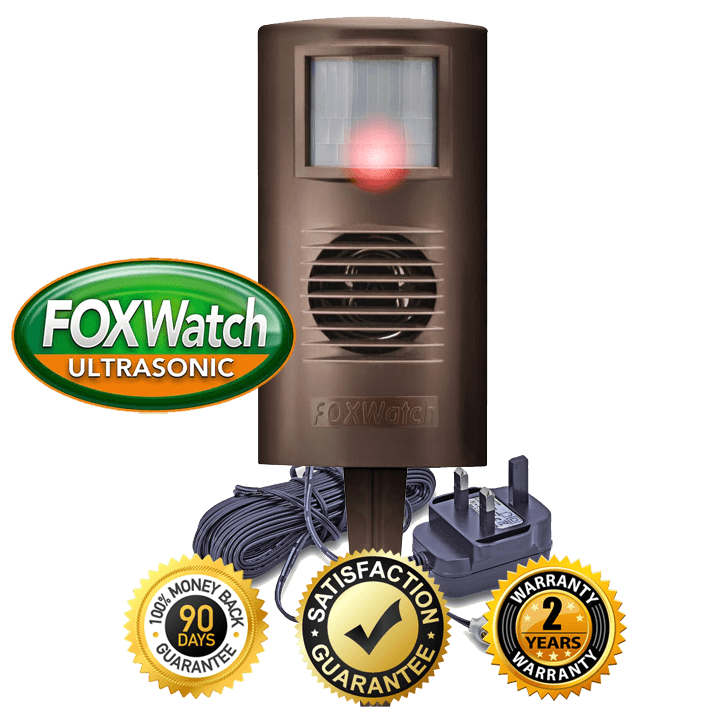

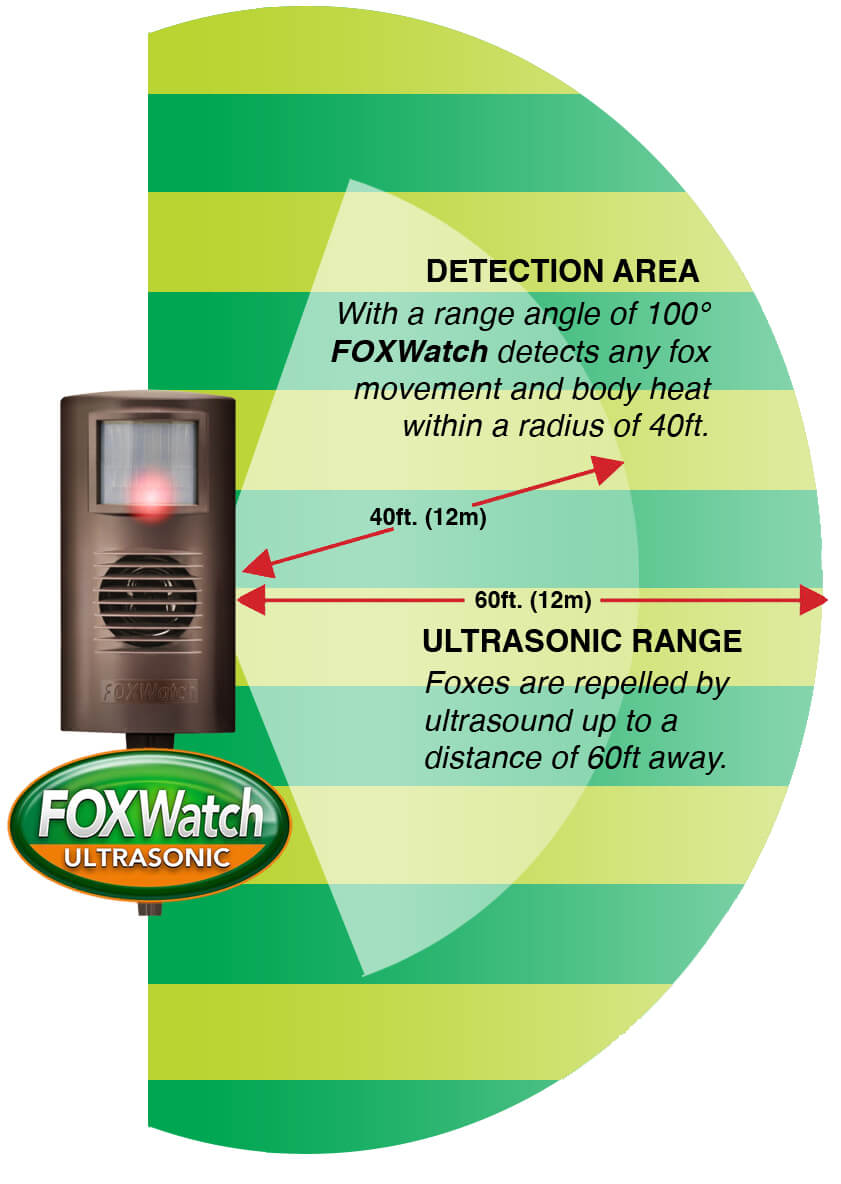
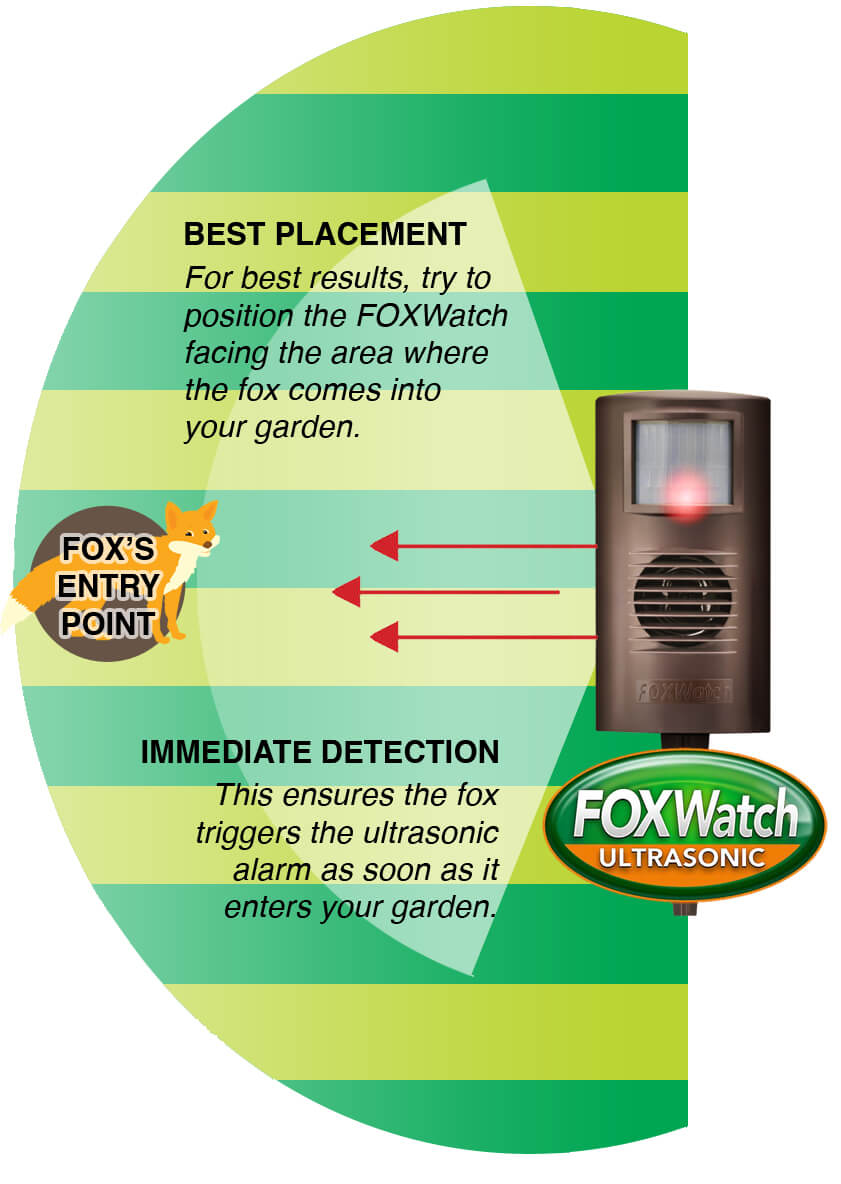


 Photo credit: Concept Research
Photo credit: Concept Research Photo credit: Adam Lowly | Pexels.com
Photo credit: Adam Lowly | Pexels.com
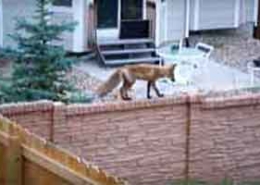
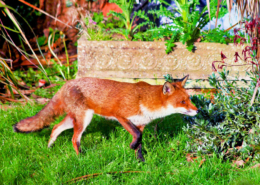 Photo credit: John Ondreasz - Pixabay
Photo credit: John Ondreasz - Pixabay



